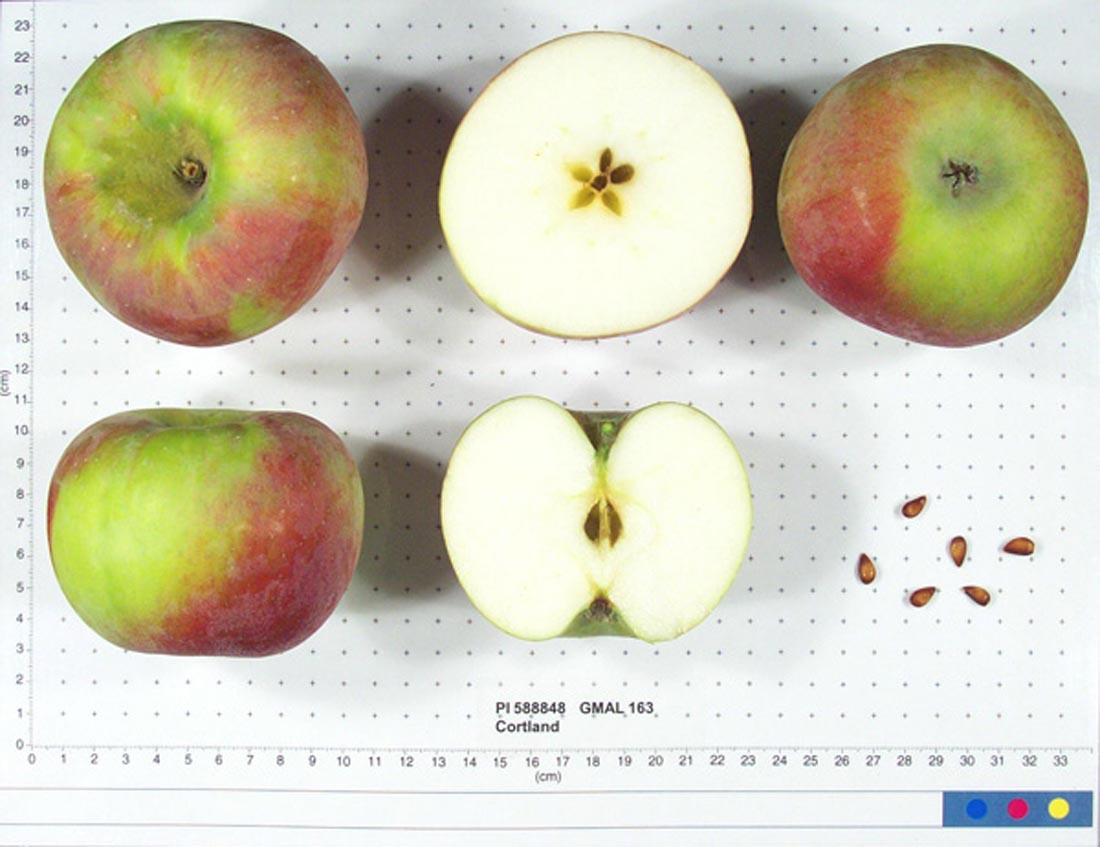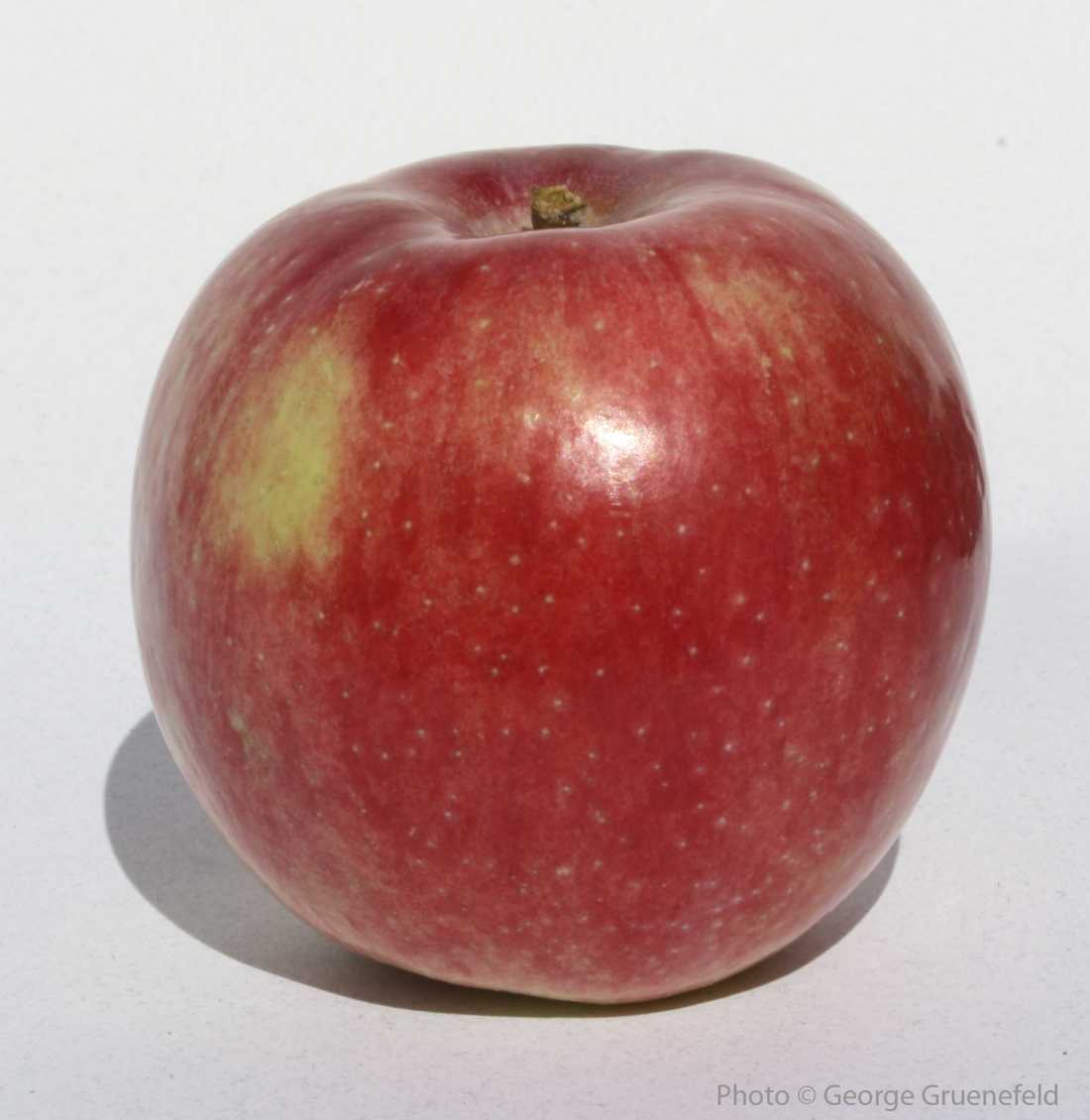Pomiferous
Welcome to the world's most extensive apples (pommes) database.
Information on over 7,000 apples is available here, all carefully researched and provided in a way that is easy to navigate.
Cortland
type: Culinary, Cider, Dessert, Pie
synonyms: Courtland
summary: Excellent supermarket variety dessert apple similar to the McIntosh. Flavours are fresh and clean when the apple ripens fully on the tree. Favoured for fresh eating, baking and in salads. Good as dried apple rings and often used to make cider.
identification: Medium size to large and oblate shape. Yellow background over which is red wash with some dark red stripes covering a quarter to a third of the surface. Lightly sprinkled with grayish-green lenticels. A heavy, pale bloom develops on the surface as the apple matures. The stem is short and slender, set in a moderately deep and wide cavity.
characteristics: Flesh is white and turns brown only slowly when exposed to air. Tender, crisp and medium fine grained. Sweet-tart flavour with hints of strawberry, rose petal and white wine. Best eaten straight off the tree, but also handles well for shipping and display.
origins: The variety was developed in 1898 by S.A. Beach (author of "Apples of New York," 1905) at the Cornell Experimental Station in Geneva, Cortland County, New York (U.S.A.). The parentage is McIntosh crossed with Ben Davis pollen. Pips were planted in 1899 and it was introduced as a commercial apple in 1915.
cultivation: Moderate vigor, upright growing tree that can withstand winter temperatures down to minus 30 C. Precocious. Bears fruit annually, both on tips and spurs. Needs to be picked manually since the fruit tends to ripen randomly throughout the harvest period and tends to hang even after fully ripe.
progeny: Birgit Bonnier (Cortland x Lord Lambourne), Suncrisp (Cortland x Cox's Orange Pippin x Golden Delicious)
mutations: Lamont Starkspur, introduced in 1982. Tends to be prominently spurred with deep red markings. Redcort introduced in 1983. Ripens two weeks earlier. NS-911 introduced in 1997. Fully washed deep red colour.
cold storage: Keeps up to four months in commercial cold storage.
vulnerabilities: Moderately resistant to scab.Susceptible to aphids as well as scab and powdery mildew. Somewhat susceptible to fire blight. Resistant to canker and collar rot.
harvest: Ready for harvest late in the fourth period.
pollination group: C
pollination peak: 8
ploidism: Diploid. Self sterile.
cold storage weeks: 16
harvest period: 4
hardiness: 3
Donate a cider?
©2016-2021 Pomiferous.com. All rights reserved

